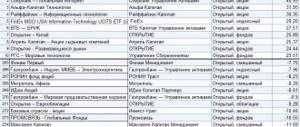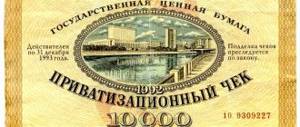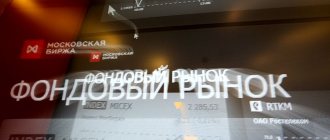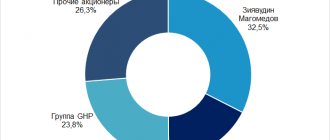The Warren Buffett Stock Portfolio consists of shares of publicly traded companies owned by Berkshire Hathaway Inc., where Warren Buffett is the CEO, Chairman of the Board of Directors and a major shareholder.
Read our review of Top Brokers for Russian citizens.
Data on stock movements (ie, purchases and sales) in Berkshire Hathaway's portfolio are updated quarterly through a filing with the US Securities and Exchange Commission. Last published on May 17, 2021.
Also, Warren Buffett has personally owned shares in three companies for several years - the banks JP Morgan and Wells Fargo (the exact number of shares is unknown) and the real estate management company Seritage Growth Properties (here Buffett owns 2 million shares, which is a 5.7% stake in the company - their market share the value as of May 18, 2021 is about $32 million, but these shares were purchased at more than 2 times more expensive!).
Berkshire Hathaway: A Brief History
Berkshire Hathaway was founded in the 19th century as not one, but two separate cotton mills in Massachusetts - Berkshire Fine Spinning Associates and Hathaway Manufacturing. The two companies merged in 1955 to form Berkshire Hathaway. In 1965, Warren Buffett and his investment company came to buy and take full control of the struggling company. Under his leadership, Berkshire Hathaway became one of the largest holding companies in the world.
Buffett officially turned Berkshire Hathaway into a conglomerate by purchasing National Indemnity—the first of what would become many insurance acquisitions for the company—while distancing himself from the textile industry by liquidating those assets entirely. The company has expanded its holdings to include other insurance companies as well as companies in the financial, apparel, entertainment, food and beverage, utilities, furniture, home furnishings, media, materials and construction industries.
Personal life of Warren Buffett
There were two main women in Warren Buffett's life.
In 1952, Buffett married Susan Buffett, who was 20 years old at the time.
Warren and Susan Buffett's three children were born:
- Susan July 30, 1953
- Howard December 16, 1954
- St. Petersburg May 4, 1958
Warren and Susan Buffett
Susan was born, like Warren, in Omaha. They met through mutual friends.
Warren at that time was a very shy young man, and according to him, only taking a Dale Carnegie course on public speaking (costing $100) allowed him to overcome his fear and propose to Susan.
Buffett was very immersed in business throughout his life, sacrificing his relationships with his family. On family holidays, after being with the guests for a while, he would go upstairs to his room and continue studying the financial statements of the companies.
Susan Buffett periodically sang in cabarets and was very fond of the crowd of artists and artists.
As a result, not receiving satisfaction from her relationship with Warren, Susan moved to San Francisco in 1977.
Until the end of Susan's life, they do not divorce and periodically appear in public together.
It is interesting that Susan herself introduced Warren to Astrid Menks, with whom he lived since breaking up with Susan.
Warren Buffett and Astrid Menks
In 2004, after a long battle with cancer, Susan died at the age of 72.
One of the charitable foundations to which Buffett periodically donates his fortune is named after Susan Buffett - the Susan Thompson Buffett Foundation.
Berkshire Hathaway War Chest
The lifeblood of Berkshire Hathaway is what industry insiders call its float. This is any money paid to Berkshire Hathaway's insurance subsidiaries in the form of premiums but not yet used to cover any claims.
Berkshire Hathaway stock price growth from 1962 to 2021
This money—also called the available reserve—does not actually belong to the insurance company. Instead, it stays on hand and its managers see fit to invest. The company's stock offering, valued at more than $100 billion, is not only one of the largest in the world, but also 50 times larger than it was a generation ago. This allows Berkshire Hathaway to quickly buy unprofitable companies and bring life back to them.
This is exactly what happened with Fruit of the Loom. Berkshire acquired the clothing company for just $835 million in 2002 after its shares lost 97% of their value.
One of the core tenets of Buffett's mentor, Benjamin Graham, is that dividends are an investor's secret weapon. Many of the Fortune 500 companies in which Berkshire Hathaway has large positions—Apple (AAPL), Coca-Cola (KO) and American Express (AXP), to name a few—have a strong history of maintaining or increasing their dividends every year. Coca-Cola, for example, has increased its annual dividend for 55 consecutive years. While unwary speculators chase hot stocks whose prices are rising, their patient brethren are loading up on companies whose fundamentals are strong enough to warrant regular cash payouts to shareholders.
Berkshire Hathaway Annual Meeting of Shareholders
Financial news outlets rarely present dividend data the same way they present stock prices and price movements, even though dividends are one of the most reliable indicators of a company's performance.
Ultimately, management will only release cash to owners when operating activities generate sufficiently large profits to make these payments feasible. Having said all this, it is Buffett's pursuit of dividends that has made Berkshire Hathaway so consistently successful.
Benjamin Graham
But the most fateful meeting occurred between Buffett and Katherine Graham’s namesake, Benjamin Graham.
Left - young Buffett, right - Benjamin Graham
This man is considered the father of fundamental security analysis.
He wrote such great books as Security Analysis and The Intelligent Investor.
Graham was a great teacher (he taught at a university and wrote books) and practitioner (he was the managing partner of an investment partnership and earned his investors an average of 17% per annum over 30 years).
People who attended Graham’s lectures (and not only students, but also professionals from the world of finance liked to attend his lectures) said that after the lecture, with examples, one could go “to the bank” or to the stock exchange and safely buy what he recommended. Are there many such teachers in universities now...
Pay dividends? Never
If dividends are what attracts Buffett to a company, the same rule doesn't necessarily apply to his conglomerate. In fact, the same Buffett who invests in companies that pay dividends avoids paying them to his own investors.
This seems so obvious at first that it hardly counts as an observation - it makes sense to take cash that other companies offer you, but never pay it out yourself. The only time Berkshire Hathaway actually paid a dividend was in 1967, at 10 cents per share. To this day, Buffett maintains that he must have been in the bathroom when the dividend was approved.
Berkshire Hathaway Textile Mill. 1960
That said, it would be shortsighted for any Berkshire Hathaway shareholder to complain about the company's refusal to pay dividends. The stock has risen sharply since Buffett took over the company, trading at $275 in 1980, $32,500 in 1995 and more than $308,530 as of November 2, 2021, a record high.
Berkshire Hathaway's rationale is simple and can be difficult to argue with. Buffett prefers to reinvest money rather than pay it out. Think about it. If you are an investor, would you rather have a dividend payout to spend, or would you rather have that money returned by a team that has grown a modest investment in textiles into one of the largest, most respected and most financially sound companies in the world?
Since one Berkshire Hathaway Class A share is equivalent to several years of the average American salary, it is not surprising that the stock trades infrequently. Buffett never considered the idea of a Class A split because it could cause speculation. However, Buffett authorized the creation of Class B shares (BRK.B), which were priced at 1/30th the value of their Class A counterpart.
Following the 50-to-1 split of BRK.B in 2010, Class B shares replaced BNSF in the index. The lower price and accompanying liquidity make Class B shares suitable for inclusion in an index that attempts to measure the value of the market. Class A shares are too expensive and too few in number to be an effective reflection of the index.
Warren Buffett and Rose Blumkin announce the sale of most of their Nebraska furniture store to Berkshire Hathaway in the early 1980s.
Some investors compare prices and then buy shares of companies that meet their criteria. Berkshire Hathaway takes a similar approach. But instead of buying a few shares, he buys the entire company. After decades of pursuing this investment strategy, the result is a global conglomerate that has no equal.
Warren Buffett - founder of the company
Buffett Investment Partnership
After Graham's company closed, Buffett returned from New York to Omaha.
By that time, he was already a relatively rich man, despite his young age (he was only 25 years old). His savings (wisely invested) amounted to about $127,000 (taking into account inflation - for 2021 this is more than $1.1 million).
Buffett did not want to stay in New York, despite the fact that Graham invited him to remain with the company, despite the change in ownership, and become a minority shareholder there.
Warren was married by that time, had children, and was planning to return to Omaha and retire...
Yes, that’s right - retire - read, invest and live for your own pleasure. Buffett assumed that because of his investing skills (which he acquired largely from working with Graham), he would be able to compound interest (interest on interest) to grow his wealth (beating inflation) despite ongoing expenses.
In his own words, he definitely did not want to engage in brokerage activities (sell securities) again, but his acquaintances, knowing about his experience, began to ask him for investment recommendations. In short, people came to him for advice on where to invest their money. After some thought, Buffett decided to create an investment partnership similar to the Graham partnership.
Warren Buffett with his family in 1956
The first investors were his relatives - his mother, aunt, sister, father-in-law, brother-in-law, plus a college roommate and a lawyer he knew - that's all Buffett's first investors. The capital of the first partnership was $105,100 (of which Buffett himself invested only $100). The year was 1956 and $105,100, adjusted for inflation, would equal $945,000 in 2021.
The terms of the agreement were such that Buffett would receive 50% of any increase in the value of the partnership's assets beyond 4%. And he reimbursed 25% of losses (unheard of conditions by today's standards).
Those. if the increase in asset value was less than 4% per year, then Buffett received nothing for his work.
He also did not charge what is fashionable today - a management fee - when the manager receives a percentage of the value of the assets, regardless of the results.
In a word, the remuneration scheme was designed in such a way that the interests of the manager (Buffett) were identical to the interests of his clients (investors in the partnership) and there were no conflicts of interest (which is so rare now).
Subsequently, when new people appeared willing to invest money together with Buffett, new partnerships appeared (essentially separate companies) and they had slightly different schemes for distributing profits and remunerating the main partner (i.e. Buffett himself).
It is worth noting here that Buffett’s own money was not initially invested in any partnership. But on the other hand, the money of his close relatives and friends was at stake, and therefore the reputation and future of Buffett himself.
Wal-Mart (WMT)
Based on Warren Buffett's stock analysis, 49.2 million shares of the world's largest retailer were purchased by BRKA in the second quarter of this year. Founded in 1962 by Sam Walton, Wal-Mart Stores, Inc. is an American multinational retail corporation currently headquartered in Bentonville, Arkansas.
According to the 2013 Fortune Global 500 list, the firm is the second largest public corporation and, at the same time, the largest private employer in the world. Controlled by the Walton family, Wal-Mart is primarily in the grocery business and also owns and operates Sam's Club retail stores in North America.
Results
The Berkshire Hathaway team, following his strategy, strives for long-term investments. Like Buffett himself, who likes to repeat that he always wanted to own assets. It is long-term passive investing, thanks to compound interest and financial discipline, that brings amazing results.
Order a free personal calculation of the investment program and a ready-made portfolio of ETFs from UNIT-LINKED.RU. Write to our managers at or call the number . We will send you a PDF file with all the details.
Where can I view the latest portfolio data?
Let's look at three options for finding out the latest data.
Option #1. Find out on the CNBC . Buffett does not hide what is included in his portfolio and in what proportions and openly publishes his changes on the CNBC channel website in its “Baffette Watch” section (go to website). The data on this site is not updated promptly and there is a significant delay.
Open publication of Buffett's investment portfolio assets on the CNBC website
Option #2. Find out on the GuruFocus . To do this, follow the link (Buffett's investment portfolio on Guru Focus). In the figure below, I have marked the stocks that are included in the portfolio, there are 52 of them in total, but 12 stocks make up 80% of the weight of the entire portfolio. Therefore, by applying the Pareto principle, you can focus on the most influential stocks that provide maximum returns. In the figure below, I have highlighted 12 significant stocks ↓
12 stocks make up 80% of the weight in the entire investment portfolio
Option #3. the FinBox online service . io . To do this, you can follow the link: → analysis of Buffett's investment portfolio. The service has a number of interesting filters: assess the dynamics of growth in the value of an investment portfolio.
Dynamics of portfolio value growth over 5 years
There is also a distribution of shares by economic sector. The main assets are focused in the IT, financial and production industries ↓
Distribution of portfolio shares by industry
If you compare the dynamics of changes in portfolio returns with the S&P 500 index, it turns out that it closely imitates its movement. Over 5 years, the return was 46%.
Portfolio return 46% over 5 years. Return of the S&P500 index 54%
Stock selection criteria for Buffett's portfolio
Warren Buffett is a follower of the value investing strategy developed by B. Graham and D. Dodd. And in his approach to stock valuation, W. Buffett applies these principles. Let's look at 6 fundamental parameters for stock selection:
- Company size (large capitalization). The business must be sufficiently developed and have a large trading volume on the stock market.
- Constant income growth. Indicates the financial reliability of the company.
- High return on equity (ROE).
- Effective management.
- A type of business that is clear to investors.
- Undervaluation of shares by multiples (P/E, P/S, P/B, etc. see → TOP 10 stock valuation ratios. Value investing)
Buffett included in his portfolio companies that have an advantage that is difficult for competitors to achieve. He called this advantage “Wide Moat” (translation: moat). This advantage allows companies to increase their profits and accumulate potential over the years. Such an economic moat can be patents, licenses, inventions, technologies, a monopoly or oligopoly position in the market, low costs that help protect the business from competition. This creates long-term sustainable business growth.
DIRECTV (DTV)
Another profitable asset of Warren Buffett. At the end of the second quarter of this year, BRKA acquired 37.3 million shares of DIRECTV, reaching a valuation of $2.3 billion. DIRECTV is an American direct provider of satellite television and radio broadcasting services that was first launched on June 17, 1994 in El Segundo, State California.
Today, the provider provides television and radio broadcasts to 35.56 million subscribers via satellite broadcasting. The company owns a total of 12 satellites and recently signed two agreements to install 2 additional satellites to be launched in 2014.









